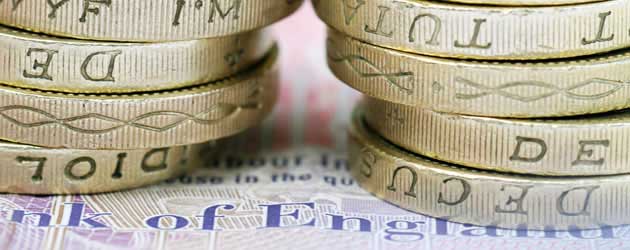
Yesterday was a good day for the Pound as Bank of England rhetoric continued to boost the Sterling currency and soft data from Europe and the United States allowed GBP to appreciate against all of its major currency peers.
Overall the Pound managed to improve by 0.45 cents against the Euro (GBP/EUR), 1.0 cents against the US Dollar (GBP/USD), 1.65 cents against the Australian Dollar (GBPAUD), and 2.5 cents against the New Zealand Dollar (GBP/NZD).
With an economic docket devoid of significant releases in the UK, Sterling traders focussed their attention on Wednesday?s Quarterly Inflation Report from the Bank of England. The upbeat assessment of the British economy featured the first upward revisions to UK growth forecasts since the financial crisis struck in 2008, which caused a bit of stir among markets as traders came to terms with the possibility that further Central Bank stimulus may not be forthcoming from the BoE.
Propped-up by Sir Mervyn King?s final Inflation Report as BoE Governor, the Pound started the day with a spring in its step and proceeded to make further inroads against the majors. The Euro was hurt by a -10% fall in Eurozone Imports and a -0.1% drop in monthly inflation. The headline year-on-year Consumer Price Index fell to a worryingly low score of 1.2%, which bolstered demand for Sterling as investors contemplated the possibility of enhanced monetary easing from the European Central Bank.
Although the ECB has avoided embarking on a full-scale asset purchasing programme, thus far, speculation is mounting that the Central Bank could look to introduce a scheme similar to that of the BoE, the Fed or the Bank of Japan?s in the near future. The potential QE programme would be aimed at spreading credit to small and medium-sized enterprises in the periphery of the currency bloc, in an attempt to drive economic output higher.
Under this hypothetical circumstance, QE would bring down the yields on Eurozone government debt, therefore reducing the appeal of assets denominated in the Euro. When stimulus programmes of this nature were brought in in Britain, the US and Japan: the Pound, the Dollar and the Yen all plunged dramatically. It stands to reason that the single currency would also plummet if the ECB were to begin purchasing assets, and for this reason the Euro remains fragile to stimulus rumours.
The Pound hit a daily high of 1.5322 against the US Dollar during the afternoon as markets reacted to news that inflation in America declined for the second month in a row, falling to a near-5-year low of 1.1%. Like the Eurozone CPI print, the soft inflationary outlook in the US makes it more likely that the Federal Reserve will continue with its expansive $85 billion a month QE3 scheme, which is seen to reduce the appeal of US Treasuries, and therefore the value of the US Dollar. Sentiment towards the ?Greenback? also took a knock as US Initial Jobless Claims rose from a 5.5-year low to a 6-month high, muddling the optimistic outlook for the US labour market.
With US and Eurozone data failing to ignite the flame of risk sentiment, the high-yield, high-risk, Antipodean currencies felt the strain. The Australian Dollar continued its downtrend against the Pound, ceding -1.65 cents to a fresh 5.5-month low of 1.5579 (GBP/AUD) and the New Zealand Dollar lost out on a whopping -2.5 cents to strike a fresh 3-month low against Sterling of 1.8742 (GBP/NZD).

Comments are closed.